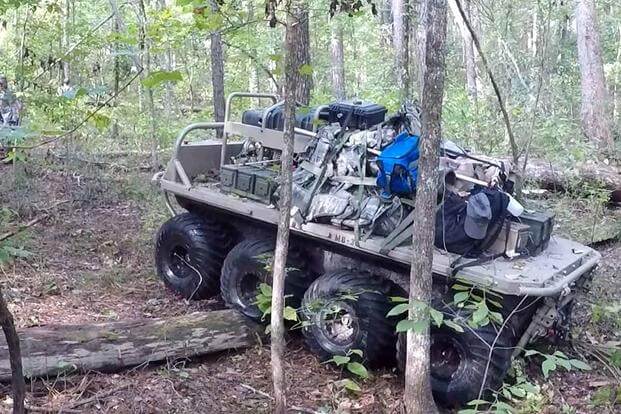The U.S. Army just awarded a contract worth $162 million to General Dynamics Land Systems to produce remote-controlled robotic mule vehicles to transport heavy combat necessities so small units won't have to carry them into battle.
After months of testing, Army robotic officials selected the GDLS Multi-Utility Tactical Transport (MUTT), which will become the service's Small Multipurpose Equipment Transport (SMET). The Army plans to start fielding it to infantry brigade combat teams (IBCTs) by early fiscal 2021.
GDLS beat out Polaris Industries Inc., Applied Research Associates Inc. (ARA) and Neya Systems LLC's MRZR X; HDT Global Hunter's WOLF; and Howe and Howe Technologies Inc.'s Grizzly in an operational test demonstration last November run by the Army's Maneuver Capabilities Development and Integration Directorate (MCDID) at Fort Benning, Georgia.
"The MUTT did very well in the [test demonstration]; it was the clear favorite among the soldiers," Lt. Col. Rob Brown, the military deputy of the Robotics Requirements Division at MCDID, told Military.com. "GD did a really good job with their system."
Related: Robotic Mules Could Deploy with Army Advisers to Afghanistan
GDLS will make some changes to the system, however, before it is fielded, he said, describing how the generator will be moved to reduce noise.
"It is all electric, but there is a generator that charges the battery, so that generator was sitting on the outside of the vehicle and it was loud," Brown said. "They are going to take that generator, put it under the deck and soundproof it so it's a lot less noisy."
The SMET will be capable of hauling more than 1,000 pounds of soldier gear at a speed of about eight miles per hour.
"It's generally supposed to go at walking speed with the squad; that's why it's eight miles per hour," Brown said.
The SMET will also generate three kilowatts of power to charge the growing number of tactical electronic devices soldiers carry.
"Having that power generation forward with multiple battery chargers was really important to the soldiers," Brown said.
On the current contract, the Army plans to buy 624 SMETs and begin fielding them to IBCTs between the fourth quarter of fiscal 2020 and the first quarter of fiscal 2021, he added.
Initially, the SMET was intended to go to every squad, but Army officials decided that such a small unit doesn't have the resources to maintain the mule or to transport it when not on foot, Brown said.
The plan now is to make SMET a battalion asset so squads, platoons and companies can benefit from the new vehicle but don't have to keep up the maintenance.
-- Matthew Cox can be reached at matthew.cox@military.com.
Read more: Navy SEAL Eddie Gallagher's Family Is Asking Trump for a Presidential Pardon












